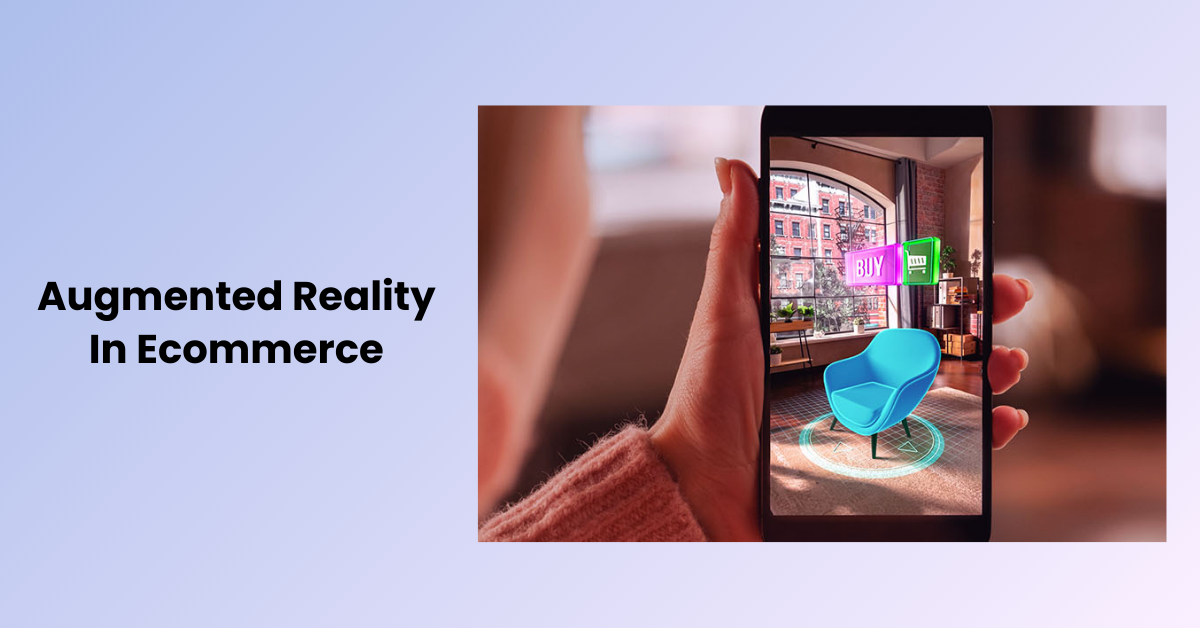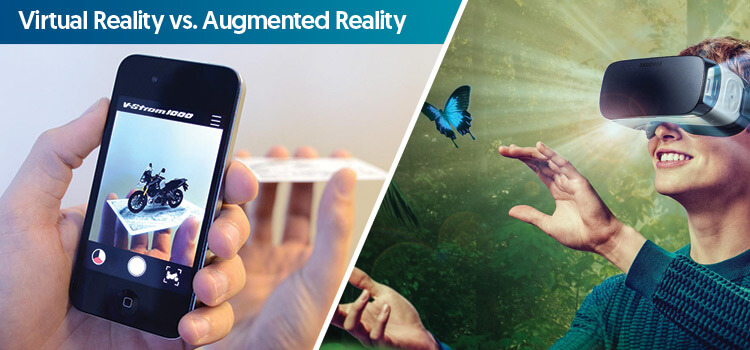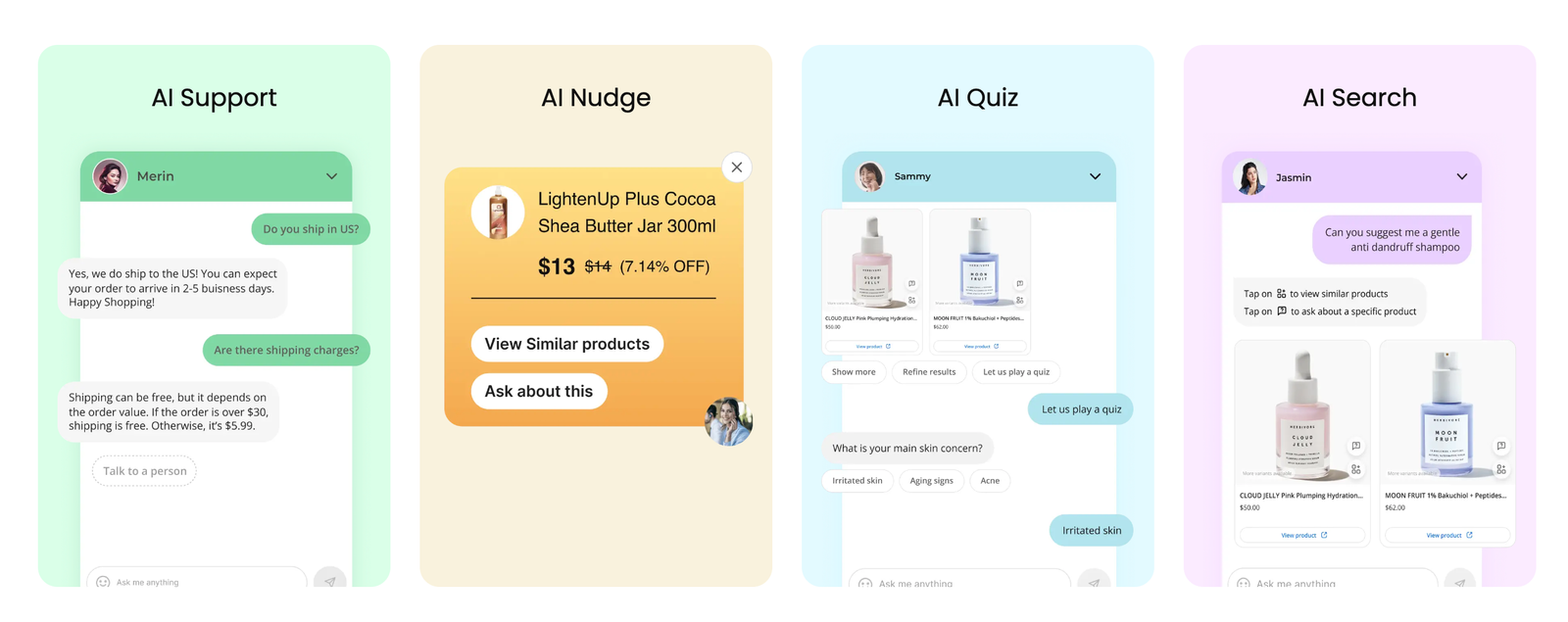Augmented Reality In Ecommerce: How Does It Work?

Convenience and choice are two benefits of online buying, but it can be difficult to picture how a thing will fit or appear in your room. The game is shifting due to augmented reality in ecommerce, which closes the gap between the actual and virtual worlds. Consider visually arranging your living room's furniture or putting on clothing before you buy it. We'll dive into the fascinating realm of augmented reality (AR) in e-commerce in this blog article, explaining how AR shopping functions and the numerous advantages it provides for both clients and companies.
What is Augmented Reality (AR)?

Augmented reality shopping is all about enriching the real world with computer-generated elements. Augmented Reality in ecommerce overlays digital content like visuals, sounds, and even sensory stimuli onto your physical surroundings. Imagine seeing 3D furniture appear in your living room through your phone's camera, or getting instructions that highlight objects you need to fix something.
Benefits Of Augmented Reality In Ecommerce

AR offers a range of benefits that can significantly enhance the ecommerce experience for both customers and businesses. Here's how:
Increased Confidence and Reduced Returns: Imagine virtually placing a sofa in your living room or trying on clothes to see how they fit. Ecommerce AR allows customers to visualize products in their own environment, leading to more informed purchase decisions and fewer returns.
Boosted Conversion Rates: Augmented Reality In Ecommerce creates a more engaging and interactive shopping experience. By allowing customers to experiment with products virtually, AR can significantly increase the chances of them making a purchase.
Personalized Shopping: Augmented Reality In Ecommerce personalizes the shopping journey. Customers can virtually customize products, try on makeup virtually, or see how furniture would look in their space. This tailored experience fosters a stronger connection with the brand.
Reduced Need for Physical Stores: Augmented Reality In Ecommerce eliminates the need to visit a physical store to see how a product looks or fits. This is particularly beneficial for bulky items like furniture or for customers who live in areas with limited retail options.
Standing Out From the Competition: Implementing Augmented Reality In Ecommerce technology showcases innovation and provides a unique shopping experience. This can be a major differentiator for businesses in a crowded online marketplace.
Importance Of Augmented Reality In Ecommerce
Here's why AR is crucial for the future of online shopping:
Bridging the Physical-Digital Divide: Ecommerce has traditionally struggled to replicate the in-store experience where customers can touch, feel, and visualize products. Augmented Reality In Ecommerce bridges this gap, offering a more realistic and interactive way to shop online.
Reduced Customer Uncertainty: One of the biggest challenges in ecommerce is product uncertainty. Customers might hesitate to buy furniture unsure of scale or clothes worried about fit. Augmented Reality In Ecommerce eliminates this uncertainty by allowing them to virtually experience products in their environment, leading to higher customer satisfaction and brand loyalty.
Boosting Sales and Conversions: Studies have shown that AR experiences can significantly increase conversion rates. By fostering engagement and reducing purchase hesitation, Augmented Reality In Ecommerce can directly translate to more sales for your business.
Future-Proofing Your Business: Augmented Reality In Ecommerce represents the performance of online shopping experiences. By embracing AR technology early on, you position your business as innovative and forward-thinking, attracting tech-savvy customers and staying ahead of the competition.
Augmented Reality Ecommerce Examples
Here are some compelling examples of how businesses are using AR to transform the shopping experience:
Virtual Try-On: Sephora's Virtual Artist app lets users virtually try on makeup before buying. Similarly, glasses retailers like Warby Parker allow customers to see how frames will look on their faces through their phone's camera.
Room Visualization: IKEA Place allows users to virtually place furniture pieces in their living room to see scale and style. This helps with purchase decisions and reduces the risk of furniture not fitting the space.
Interactive Product Exploration: Shoe companies like Wannaby use AR to let customers virtually try on sneakers, allowing them to see how the shoes look from different angles and in various lighting conditions.
Art in Your Space: Saatchi Art offers an AR app that allows users to visualize artwork on their walls before purchasing. This helps with placement decisions and ensures the artwork complements the existing décor.
Augmented Reality In ecommerce: Statistics
Here's a quick rundown of AR in ecommerce statistics to showcase its growing importance:
User base on the rise: By 2 to 2024, there's an estimated 1.73 billion users projected for mobile AR [TechJury].
Consumer interest is strong: Around 70% of consumers believe AR can enhance their shopping experience [TechJury].
AR leads to sales: Up to 57% of customers are more likely to purchase from a brand that utilizes AR [XR Today].
Engagement is key: AR experiences can be 200% more engaging than traditional online product presentations [Threekit].
Early adopters see results: A study by Vertebrae showed a 19% increase in customer engagement for retailers using AR during the pandemic [REYDAR].
Conversions skyrocket: Customers who engage with AR features are 90% more likely to convert into sales compared to those who don't [Intelivita].
Difference Between Augmented Reality And Virtual Reality In Ecommerce

Both augmented reality (AR) and virtual reality ecommerce have the potential to revolutionize ecommerce, but they offer distinct experiences:
Augmented Reality (AR)
Focus: Enhances the physical world with digital elements. Imagine seeing furniture in your living room through your phone's camera.
Environment: Overlays digital content onto your real surroundings. You remain aware of your physical space.
Accessibility: Typically accessed through smartphones or tablets with cameras. Generally more affordable and user-friendly.
Ecommerce Applications: Virtual try-on (clothes, makeup), product visualization in your space (furniture, art), interactive product exploration (shoes).
Virtual Reality (VR)
Focus: virtual reality in ecommerce creates a completely immersive, computer-generated environment. Imagine walking through a virtual clothing store.
Environment: Transports you to a virtual world, blocking out your physical surroundings.
Accessibility: Requires specialized VR headsets and controllers, making it costlier and less convenient.
Ecommerce Applications: Virtual showrooms, immersive product demonstrations (electronics), gamified shopping experiences.
Implement a GPT-powered AI Shopping Assistant on your Shopify Store

Adding Manifest AI, a GPT-powered AI Shopping Assistant to your Shopify store can revolutionize customer interactions. Here's what it entails:
- AI Search: Improves search capabilities, enabling swift product discovery via conversational queries, and facilitating a more efficient shopping process.
- AI Support: Offers real-time, automated help for customer questions, providing quick solutions and enhancing overall customer contentment.
- AI Nudges: Utilizes insights from customer activity to suggest relevant products, motivating additional exploration and purchases aligned with customer preferences.
- AI Quizzes: Captivates customers with quizzes to identify their likes and recommend products accordingly, personalizing the shopping journey for every individual.
Conclusion
The e-commerce industry is rapidly changing due to augmented reality (AR). AR increases confidence and lowers returns by enabling buyers to virtually experience things before they buy by bridging the gap between the digital and physical worlds. We may anticipate even more cutting-edge uses for augmented reality technology as it develops, which will eventually boost engagement, tailor the buying experience, and boost revenue for online retailers. So fast-forward to an exciting future where augmented reality (AR) transforms internet shopping. Fasten your seatbelt.

.png)
